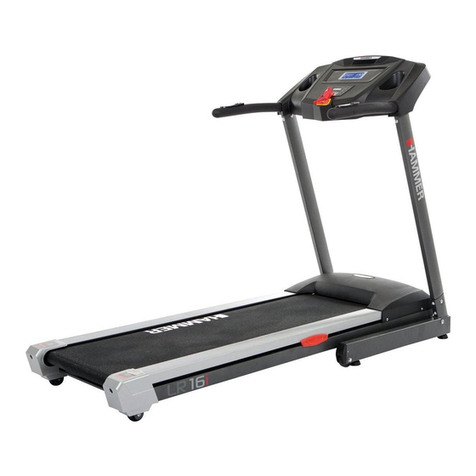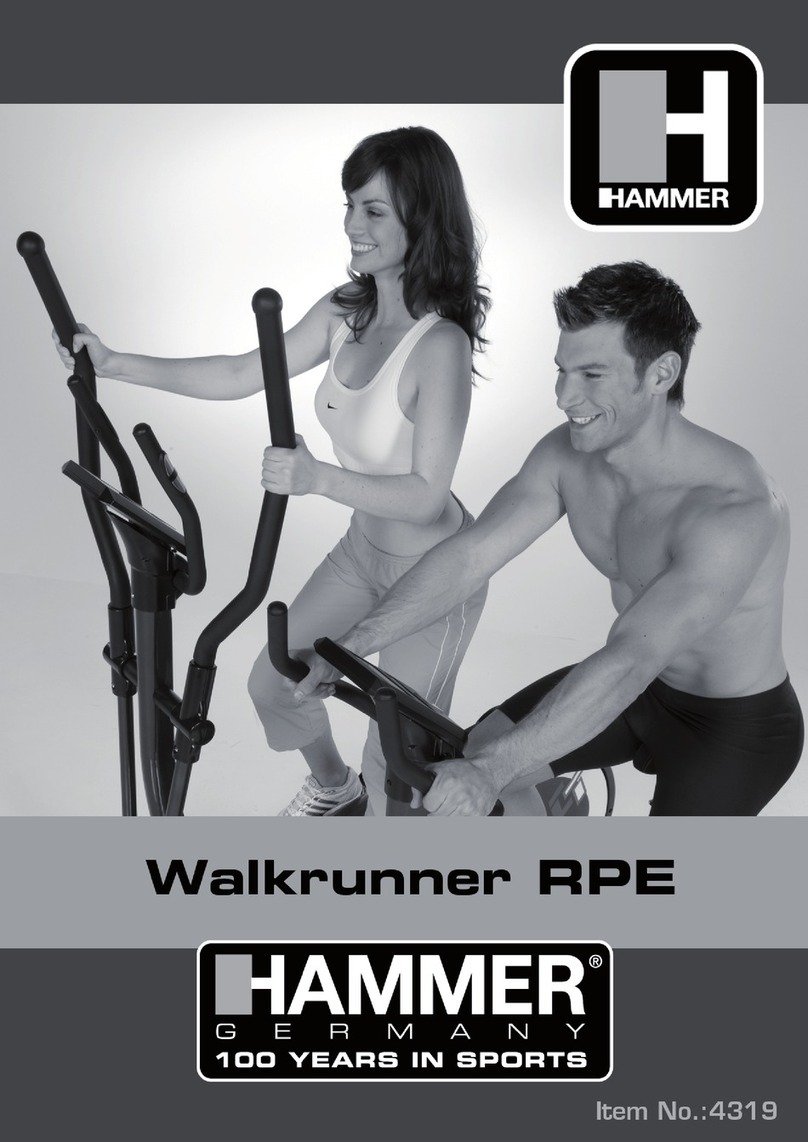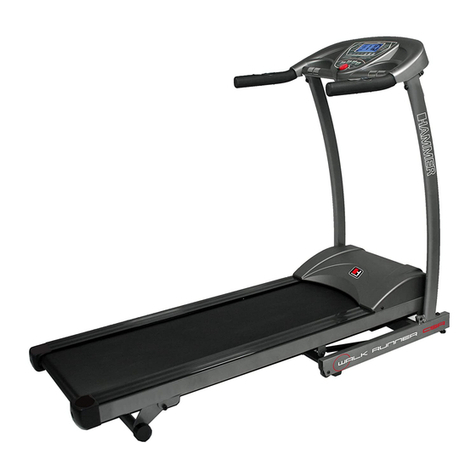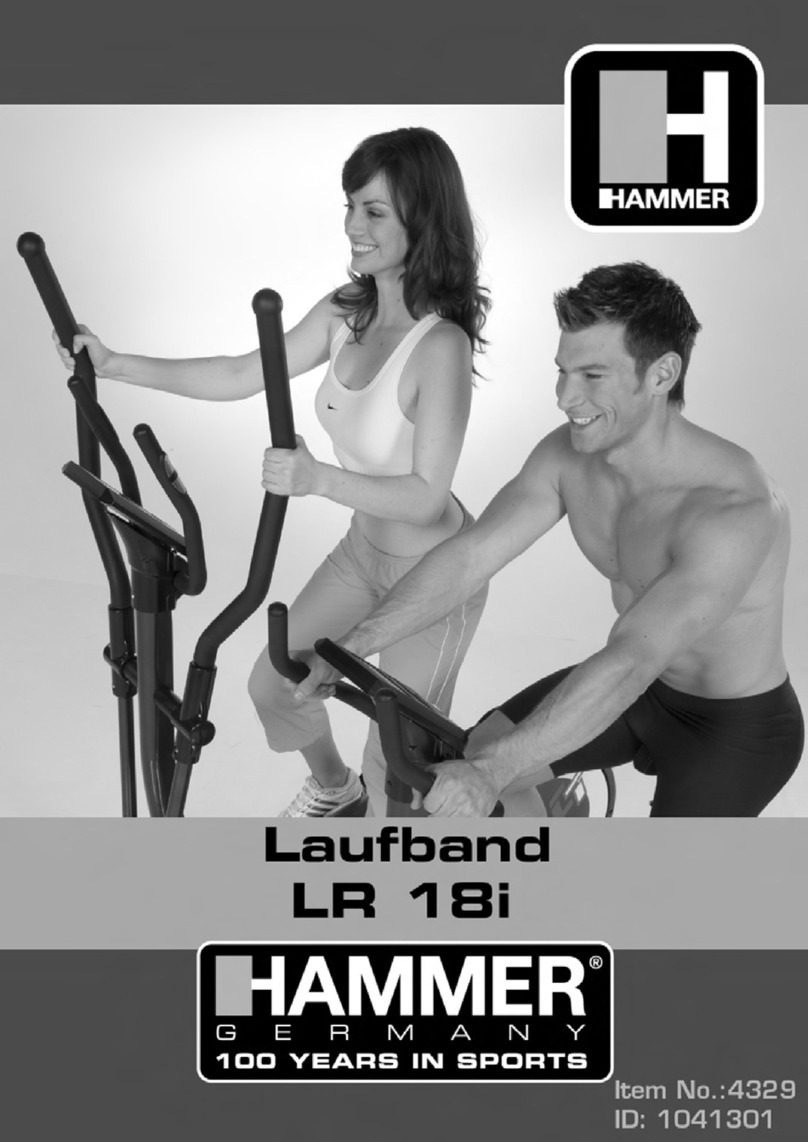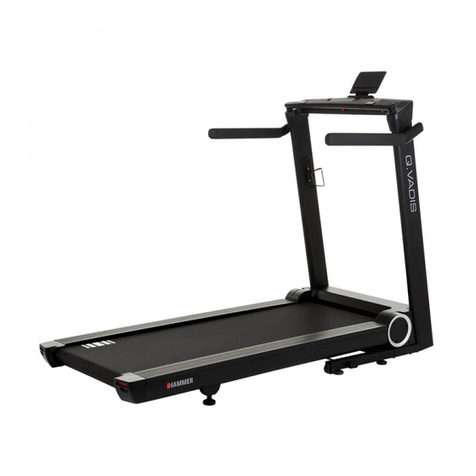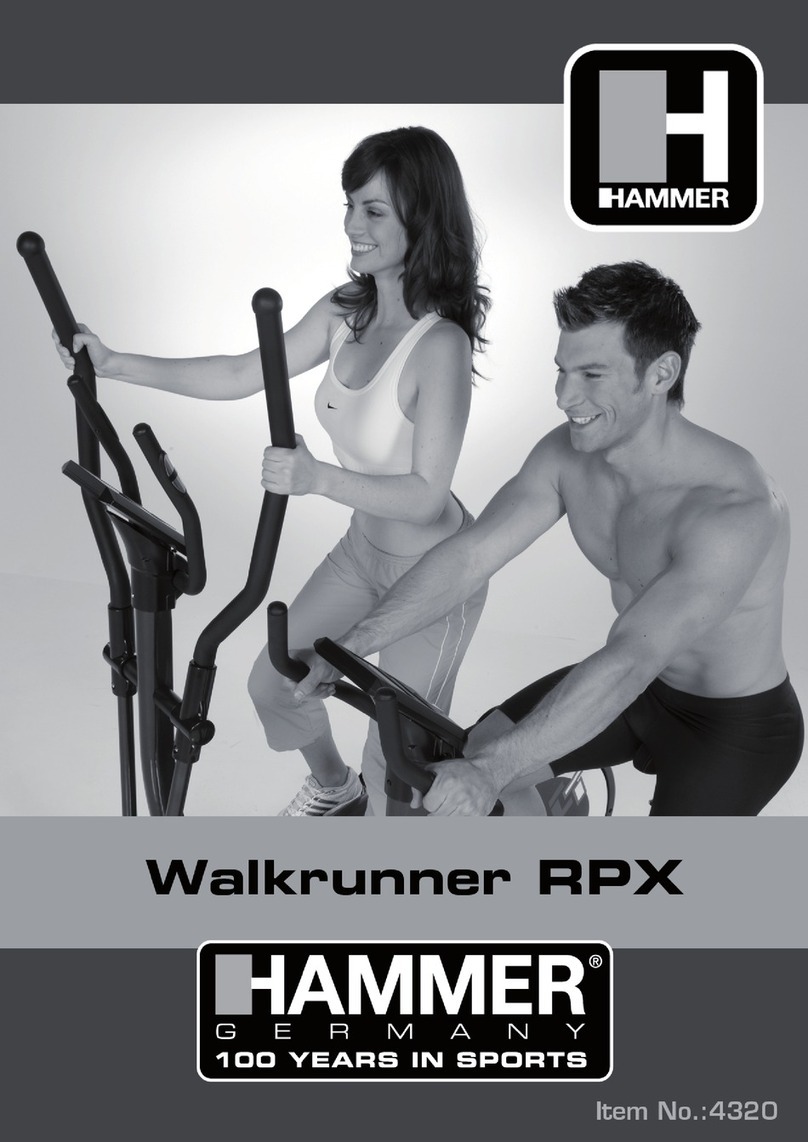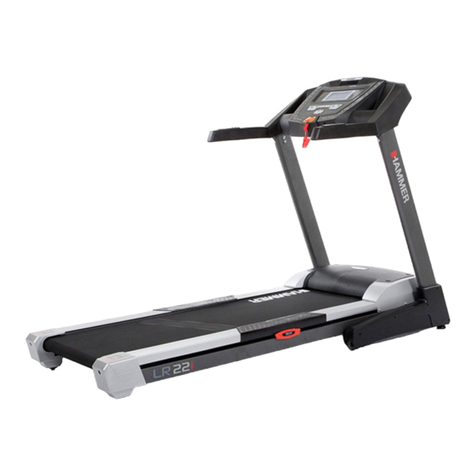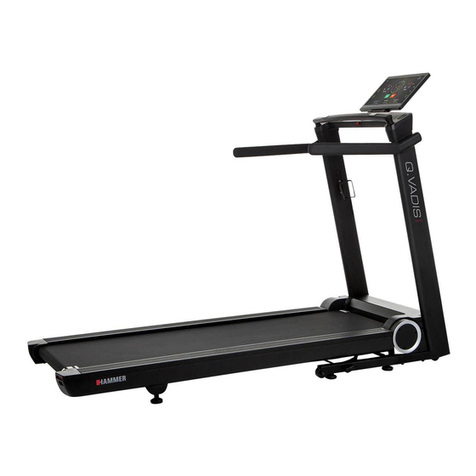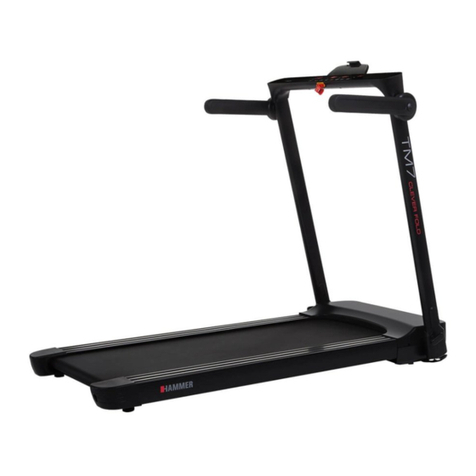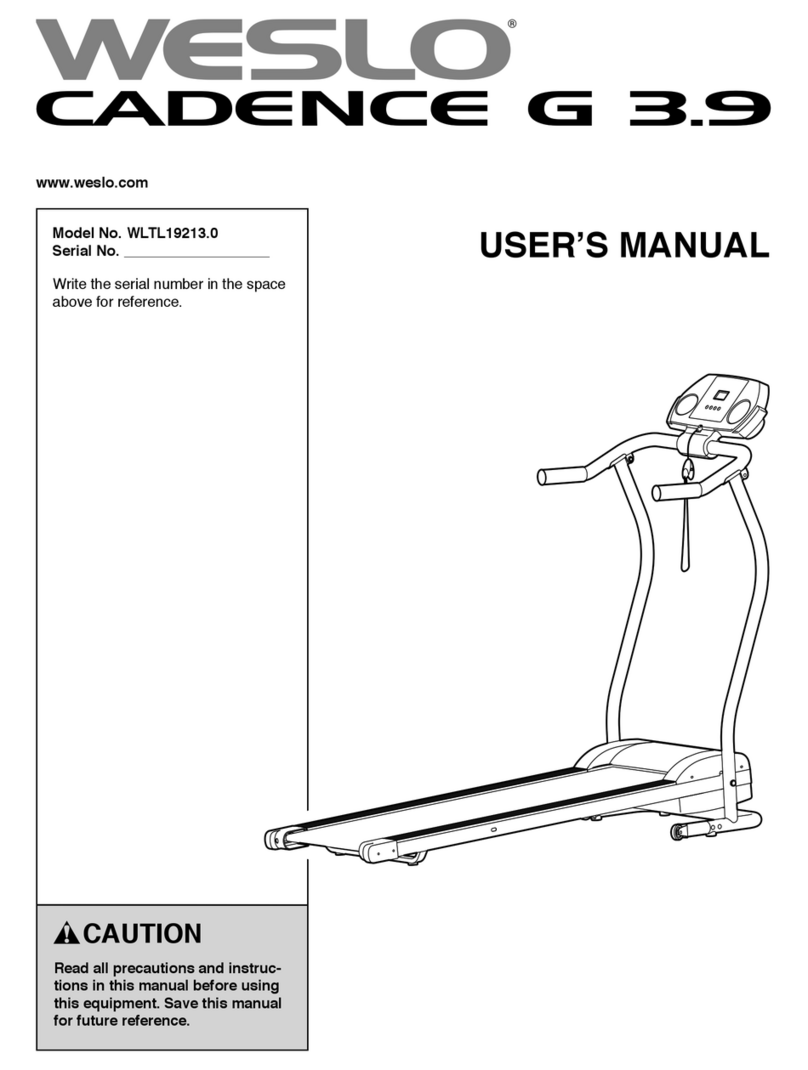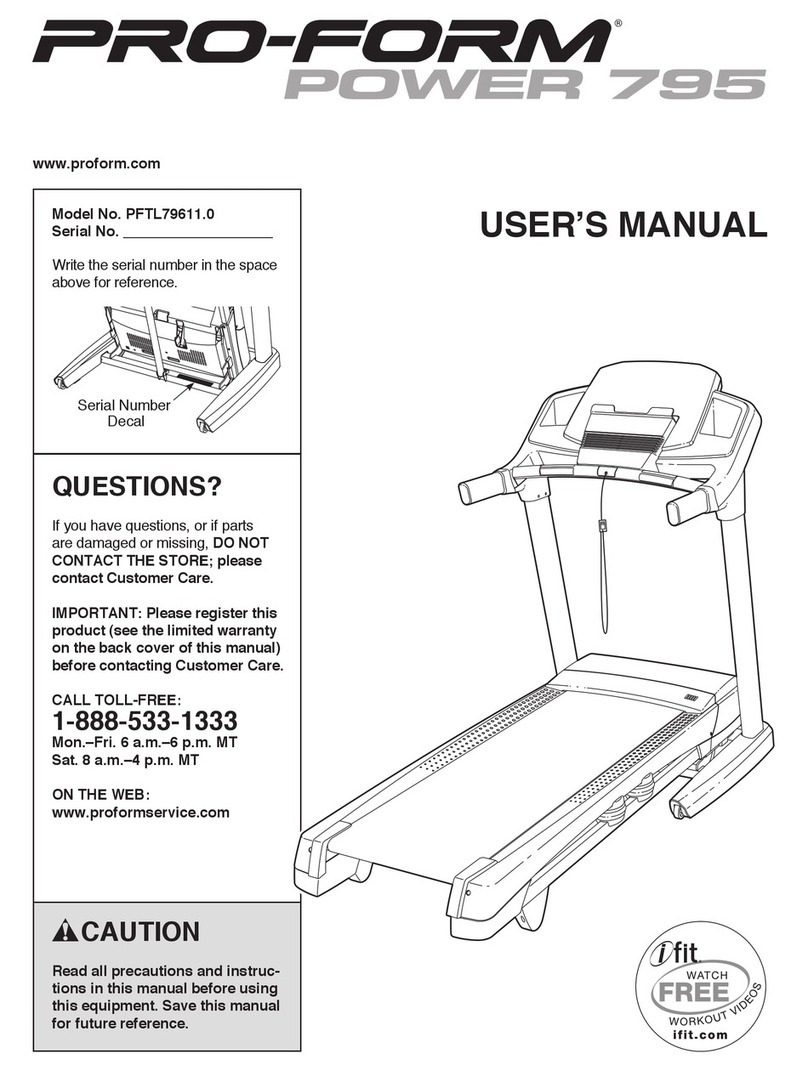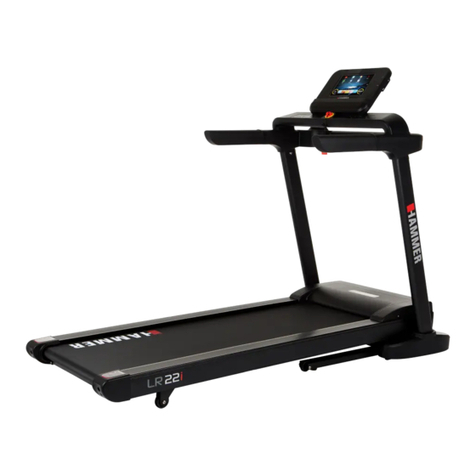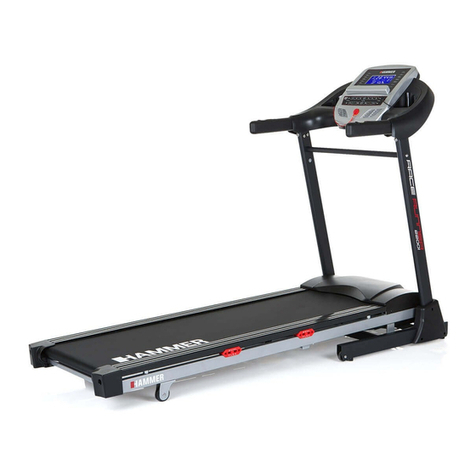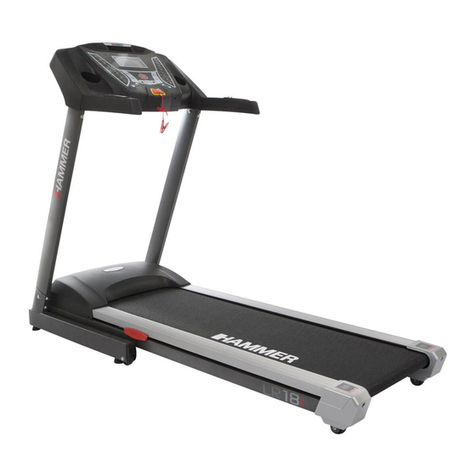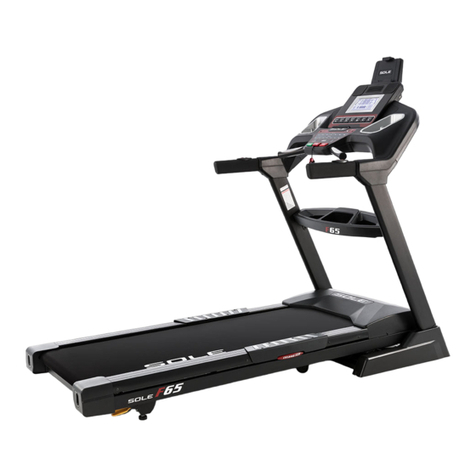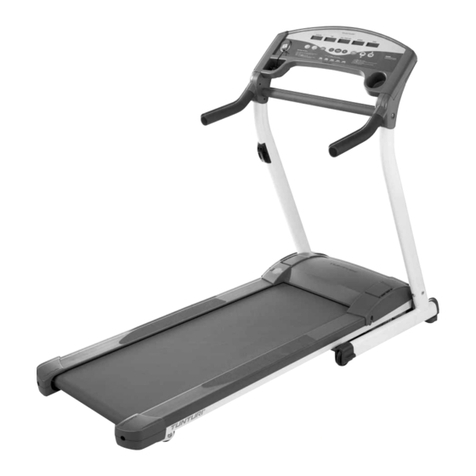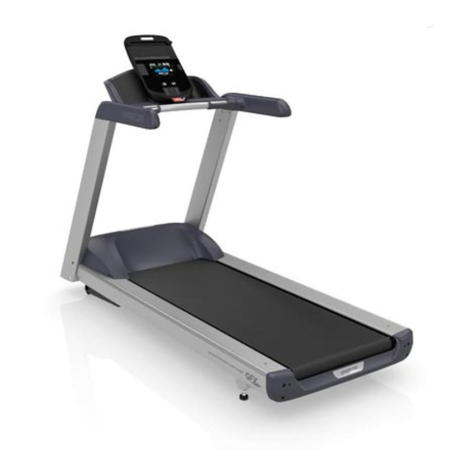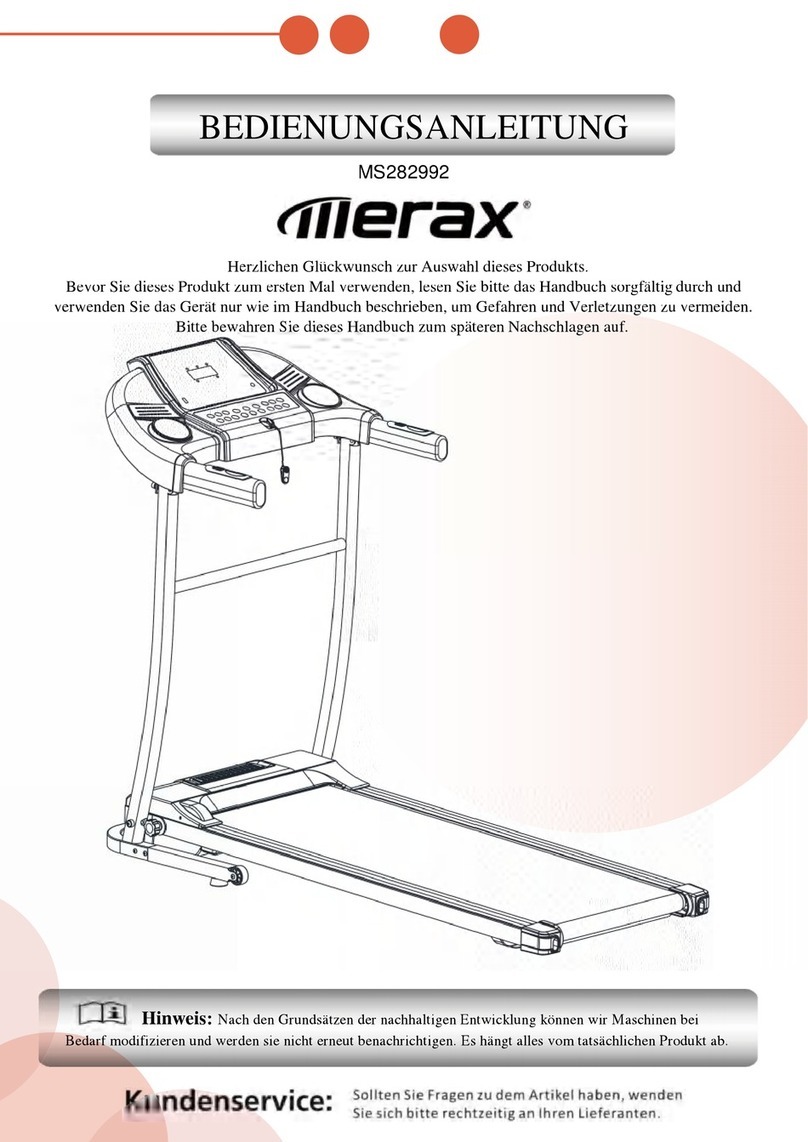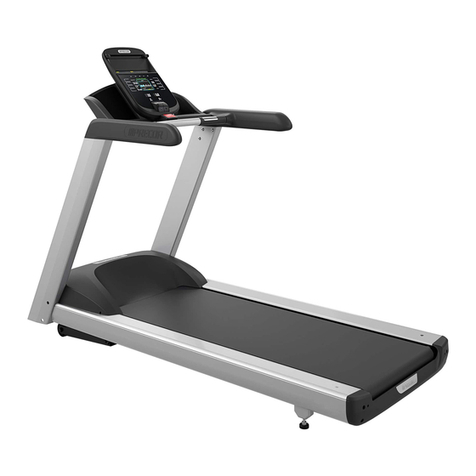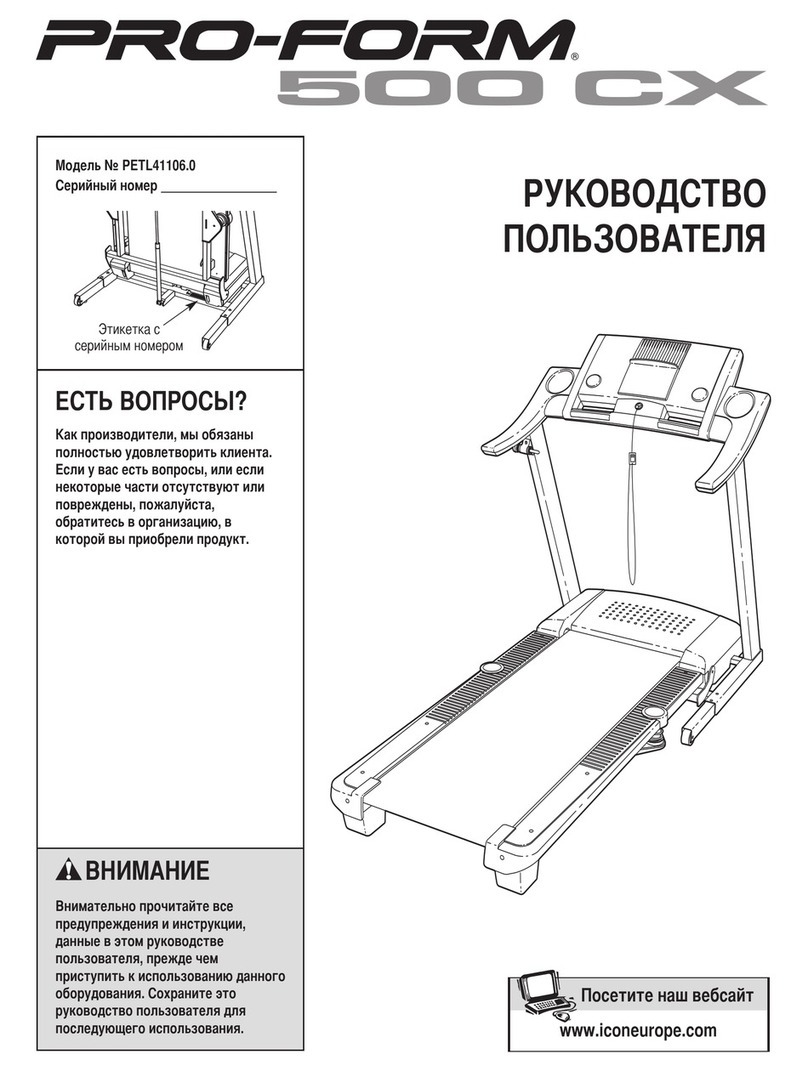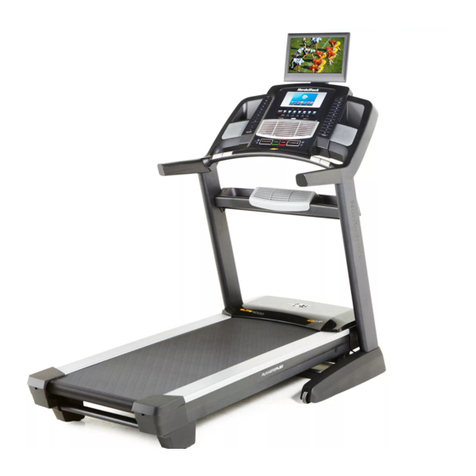
IMPORTANT!
•The treadmill is produced according to DIN EN 957-1/6
class HB.
•Max. user weight is 130kg.
•The treadmill should be used only for its intended purpose.
•Any other use of the item is prohibited and maybe danger-
ous. The importer cannot be held liable for damage or inju-
ry caused by improper use of the equipment.
•The treadmill has been produced according to the latest
safety standards.
To prevent injury and / or accident, please read and follow
these simple rules:
1. Do not allow children to play on or near the equipment.
2. Regularly check that all screws, nuts, and handles
are tightly secured.
3. Promptly replace all defective parts and do not use the
equipment until it is repaired. Watch for any material
fatigue.
4. Avoid high temperatures, moisture and splashing water.
5. Carefully read through the operating instructions before
starting the equipment.
6. The equipment requires sufficient free space in all
directions, at the rear side, min. 2m and the width like the
treadmill is having!
7. Set up the equipment on a solid and flat surface.
8. Do not exercise immediately before or after meals.
9. Before starting any fitness training, let yourself
examined by a physician.
10. The safety level of the machine can be ensured only if you
regularly inspect parts subject to wear. These are
indicated by an * in the parts list. Levers and other
adjusting mechanisms of the equipment must not obstruct
the range of movement during training.
11. Training equipment must never be used as toys.
12. Do not step on the housing but only on the steps
provided for this purpose.
13. Do not wear loose clothing; wear suitable training
gear such as a training suit, for example.
14. Wear shoes and never exercise barefoot.
15. Make certain that other persons are not in the area of
the treadmill, because other persons may be injured by the
moving parts.
16. It is not allowed to place the item in rooms with high
humidity (bathroom) or on the balcony.
17. Please check that the item is grounded during exercise. If
the ground is not perfect, a mailfunction of the computer
can cause an electrical shock!
18. Repairs are only allowed to be done by an electrician.
19. Pay attention to enough distance between the power cable
and the treadmill to hot sources.
20. Set up the treadmill in such a way, that you are able to see
other persons, who are appraoching..
1. Istruzioni di sicurezza 1. Safety instructions
02
IMPORTANTE!
•Questa attrezzatura è prodotta secondo la norma DIN EN
957-1/6 classe HB.
•Peso Massimo utente è di 130 kg.
•Questo tapis roulant deve essere utilizzato solo per lo
scopo previsto.
•Ogni altro uso dell'apparecciatura è vietato e puo' essere
pericoloso. L'importatore non può essere ritenuto
responsabile per danni o lesioni causati da un uso
improprio dell'attrezzatura.
•Questo tapis roulant è stato realizzato secondo gli ultimi
standard di sicurezza.
Per evitare lesioni e / o incidenti, si prega di leggere e
seguire queste semplici regole:
1. Non lasciare giocare i bambini sopra o vicino
l'apparacchiatura.
2. Controllare regolarmente che tutte le viti, dadi, maniglie e
pedali siano saldamente fissati.
3. Sostituire prontamente tutte le parti difettose e non
utilizzare l' attrezzatura finché non viene riparata.
Controllare qualsiasi usura del materiale.
4. Evitare le alte temperature, l'umidità e gli spruzzi d'acqua.
5. Leggere attentamente le istruzioni prima di avviare
l'apparacchiatura.
6. L' apparacchiatura richiede spazio libero sufficiente in tutte
le direzioni (di almeno 1,5 m).
7. Disporre l' apparacchiatura su una superficie solida e piatta.
8. Non iniziare l'allenamento immediatamente prima o dopo i
pasti.
9. Prima di iniziare qualsiasi allenamento fitness, é necessario
fare una visita medica.
10. Il livello di sicurezza della macchina può essere garantito
solo se si controllano regolarmente le parti soggette ad
usura. Queste sono indicacated da un * asterisco
nell'elenco dei pezzi di ricambio. Leve e altri meccanismi di
regolazione dell'apparecchiatura non devono ostacolare i
movimenti durante l'allenamento.
11. La presente é un'apparacchiatura per fitness e non
deve mai essere usata come giocattolo.
12. Non salire su altre parti della struttura, ma solo sulle
pedane previste a tale scopo.
13. Non indossare abiti larghi; indossare indumenti
adeguati all' esercizio sportivo, quali una tuta da ginnastica,
per esempio.
14. Indossare scarpe da ginnastica e mai allenarsi a piedi
nudi.
15. Assicurarsi che altre persone non siano a prossimità
durante l'allenamento, poiché potrebbero essere ferite dalle
parti in movimento della macchina.
16. Non è consentito inserire l'apparecchiatura in ambienti
ad alta umidità (bagno) o sul balcone.
17. Controllare che l'apparecchiatura sia collegata con la
messa a terra durante il funzionamento. Se la messa a terra
non è funzionante/presente, un mal funzionamento del
computer può causare scosse elettriche!
18. Le riparazioni sono consentite solo da elettricisti
qualificati.
19. Prestare attenzione a garantire una distanza sufficiente
tra il cavo di alimentazione, il tapis roulant e eventuali fonti di
calore.
20. Sistemare il tapis roulant in modo da poter vedere le
persone quando si avvicinano all'apparecchiatura.




















